Kitt Peak telescopes remain standing after Arizona wildfire claims at least 4 buildings on site
The observatory remains an "active fire fighting" area.
A raging wildfire is "mostly holding" at Kitt Peak National Observatory, which remains too dangerous for astronomers to verify how much of the area was damaged, officials said in an update Monday (June 20).
Although initial evaluations suggest that all the telescope domes remain standing, the Arizona facility remains an "active fire fighting" area, with aerial firefighting efforts continuing by planes and helicopters over both the observatory and neighboring communities, officials from the National Science Foundation's National Optical-Infrared Astronomy Research Laboratory (NOIRLab), which runs the observatory, said in a statement.
"It has not been possible to visit the observatory with a damage assessment team yet to evaluate the state of the telescopes," officials wrote. "The entire observatory is still considered too dangerous and is open only to the firefighting teams."
Related: Satellites watch devastating fires blaze across northern New Mexico

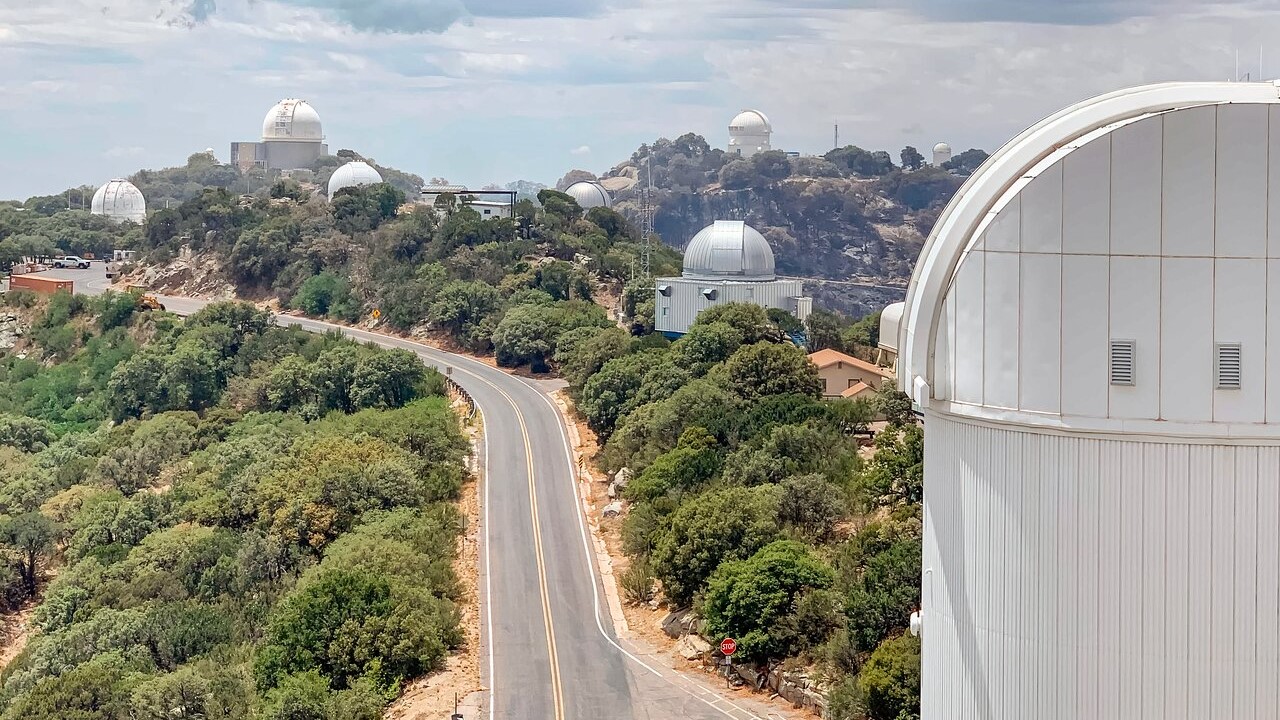
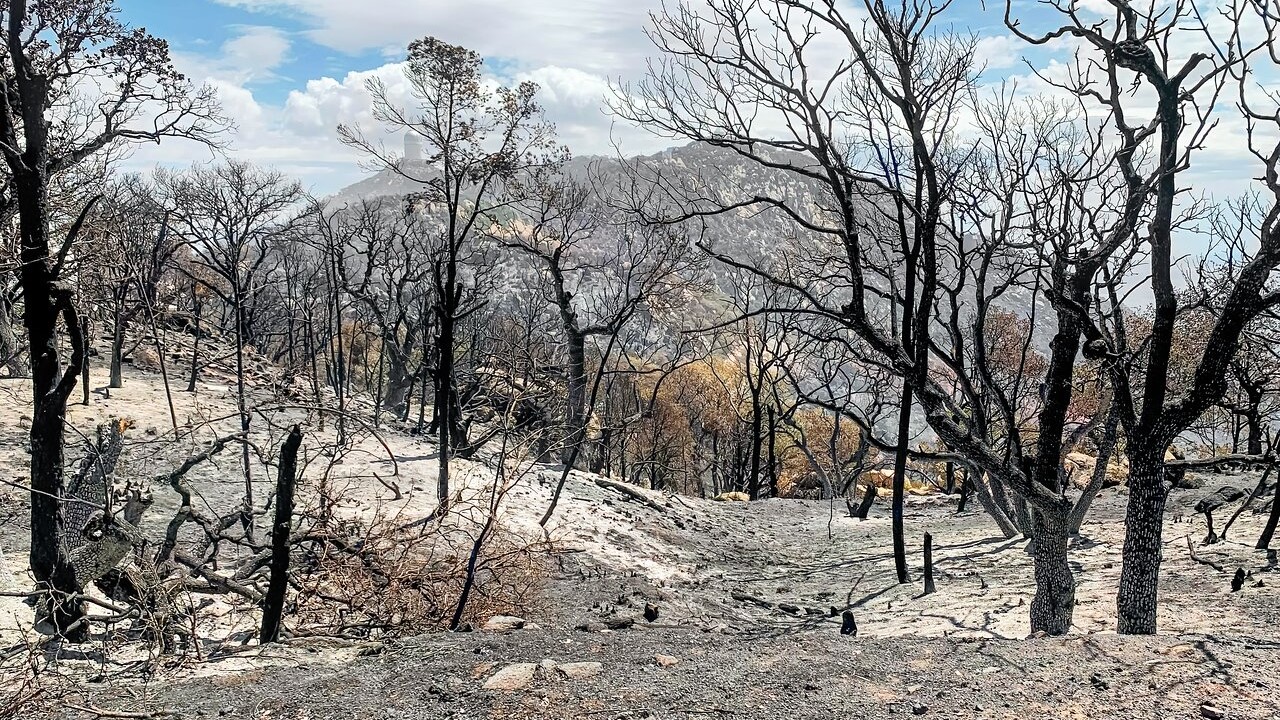
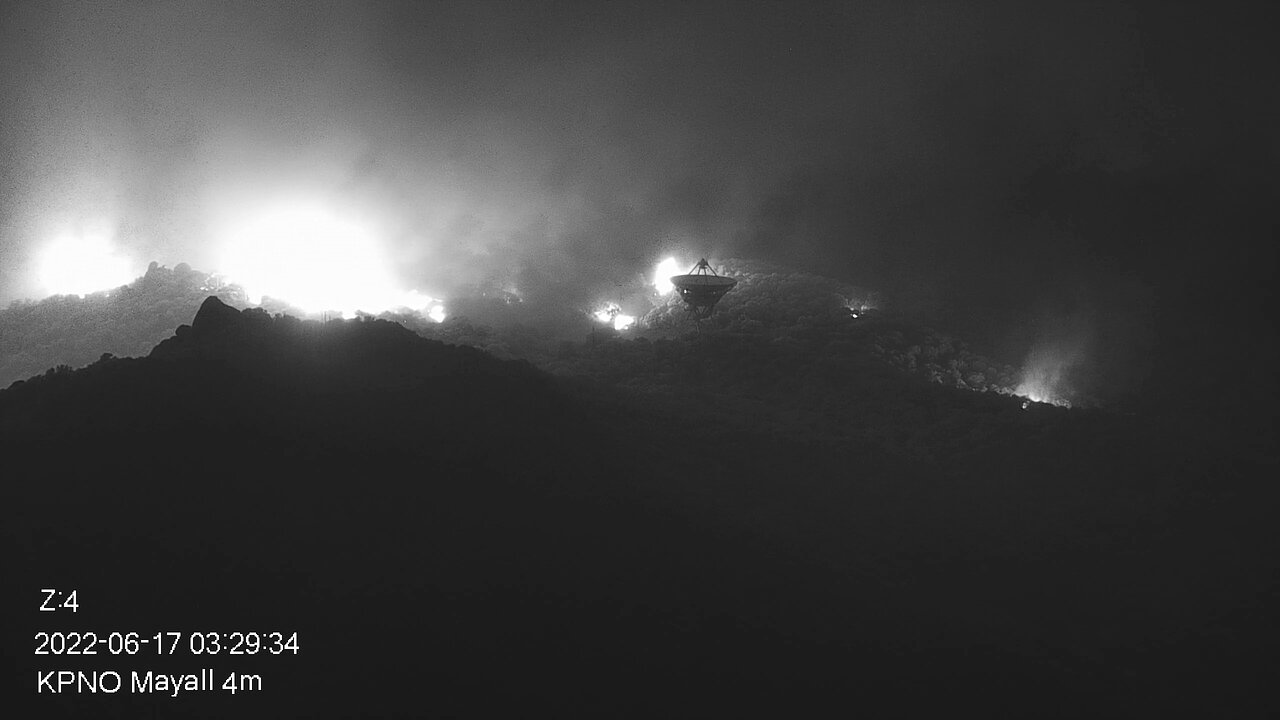
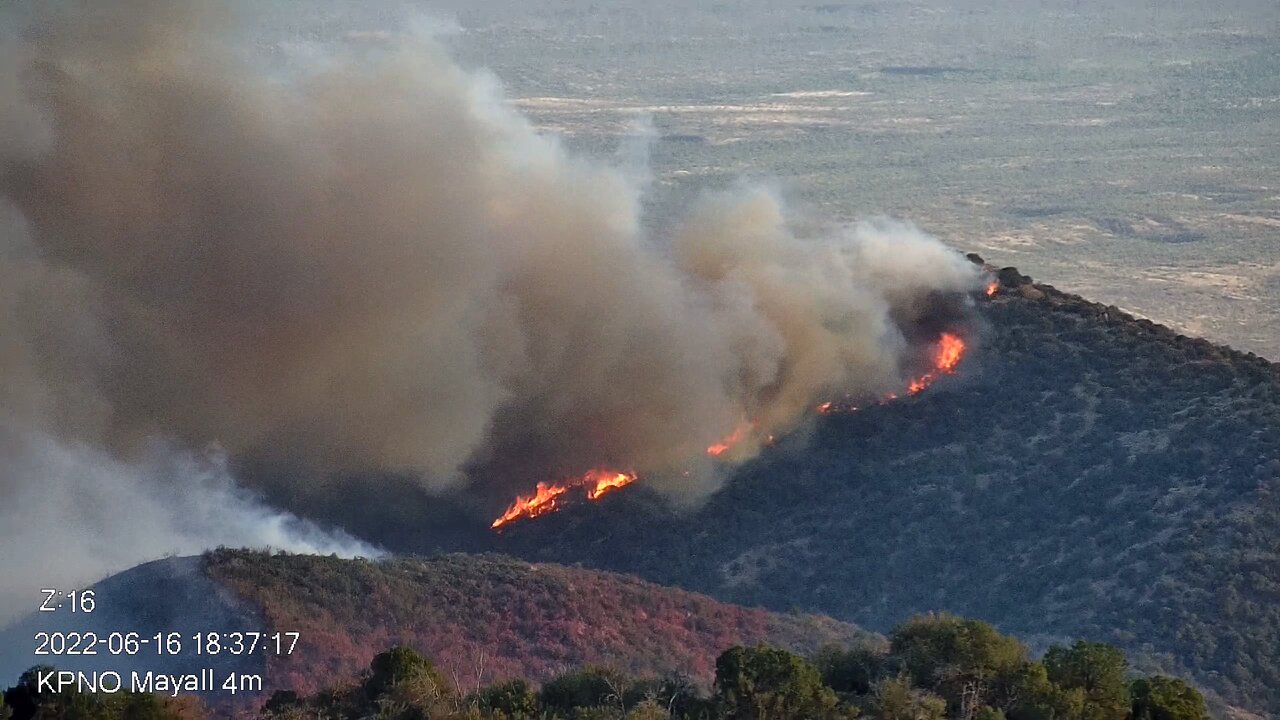
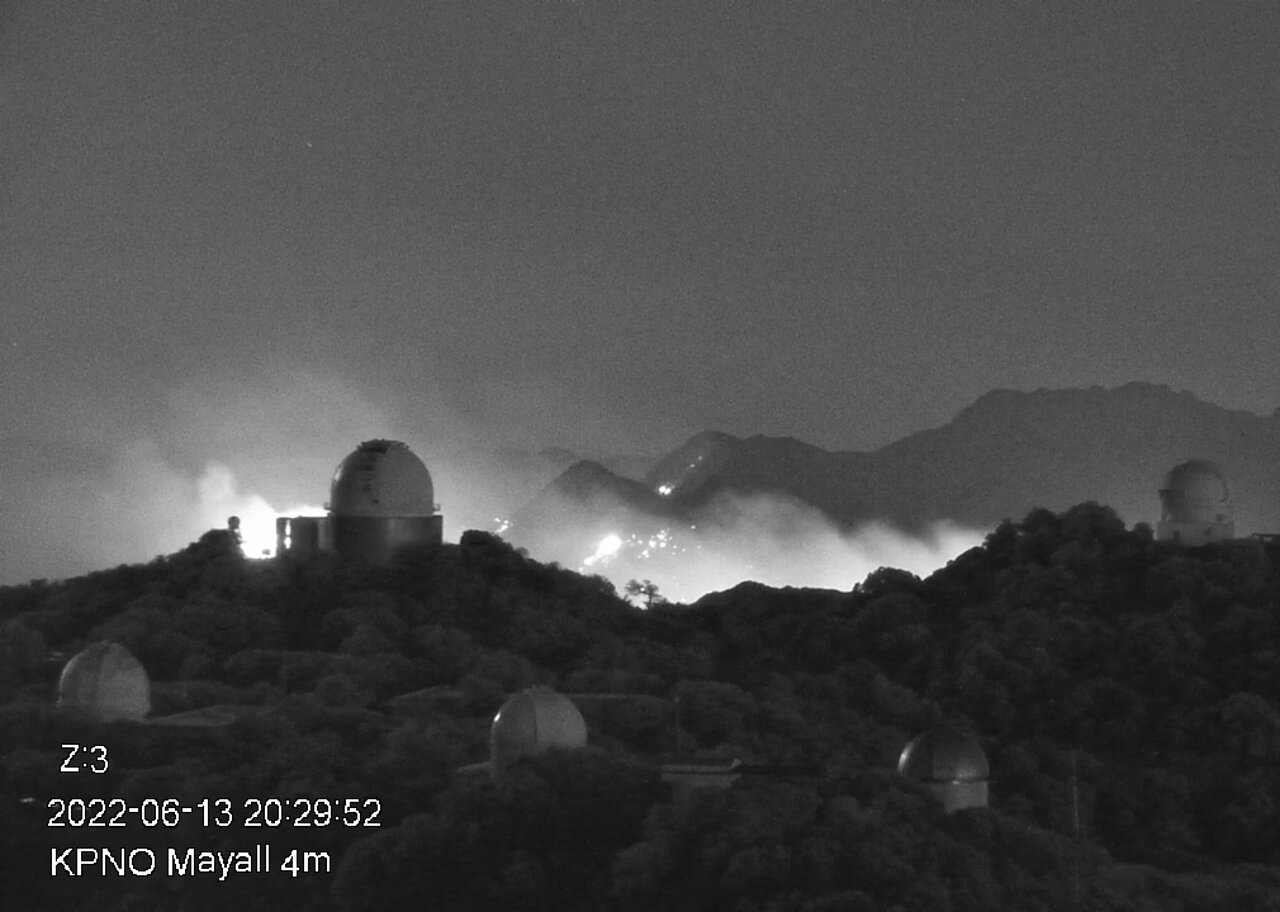
As of Saturday (June 18), Kitt Peak personnel were "cautiously optimistic that the worst may have passed," although NOIRLab officials noted that fire officials deemed the mountain at risk for about a week longer.
Firefighters have reported that while all the telescope domes remain standing, at least four non-scientific structures (meaning, dormitories and other support buildings) were lost on Friday (June 17), the NSF said.
"Astronomical facilities and instrumentation appear intact, but assessments of damage to equipment will only begin once conditions allow for safe entry into the area," officials wrote in an update Sunday (June 19).
Get the Space.com Newsletter
Breaking space news, the latest updates on rocket launches, skywatching events and more!
As of Monday (June 20), the Contreras Fire was raging across 20,360 acres (nearly 8,240 hectares) and had grown in size by about 8% since the day before, NSF reported, and was 40% contained.
"The [firefighting] team today reported that the fire is mostly holding at Kitt Peak but that there are still significant resources committed to protecting the site," NOIRLab officials wrote on Monday. "We are deeply grateful for their tireless efforts."
#Contrerasfire UPDATE 20 June: Active fire fighting remains near @KittPeakNatObs In the last 24 hrs, the affected area increased to a total of 20,360 acres. The fire is at 40% containment, according to the Eastern Area Incident Management Team. https://t.co/mQ6lEpKtMZ (1/4) pic.twitter.com/Ex31fTRs2JJune 20, 2022
NOIRLab officials have stated that assessing the damage from the fire will likely take weeks, while it may take still longer to re-establish infrastructure like the site's power supply.
Kitt Peak is home to one of the largest collections of astronomical instruments in the United States and is situated amid dense brush and steep terrain, making the area difficult for firefighters to navigate.
Wildfires are generally increasing in frequency and intensity due to ongoing, human-driven global warming.
Other observatories have also faced down significant fires in recent years. Examples include a huge California fire coming within just a few miles of the SETI (Search for Extraterrestrial Intelligence) Institute's Allen Telescope Array in September 2021, and a wildfire coming very close to Mount Wilson Observatory, also in California, in September 2020.
Follow Elizabeth Howell on Twitter @howellspace. Follow us on Twitter @Spacedotcom and on Facebook.
Join our Space Forums to keep talking space on the latest missions, night sky and more! And if you have a news tip, correction or comment, let us know at: community@space.com.

Elizabeth Howell (she/her), Ph.D., was a staff writer in the spaceflight channel between 2022 and 2024 specializing in Canadian space news. She was contributing writer for Space.com for 10 years from 2012 to 2024. Elizabeth's reporting includes multiple exclusives with the White House, leading world coverage about a lost-and-found space tomato on the International Space Station, witnessing five human spaceflight launches on two continents, flying parabolic, working inside a spacesuit, and participating in a simulated Mars mission. Her latest book, "Why Am I Taller?" (ECW Press, 2022) is co-written with astronaut Dave Williams.









